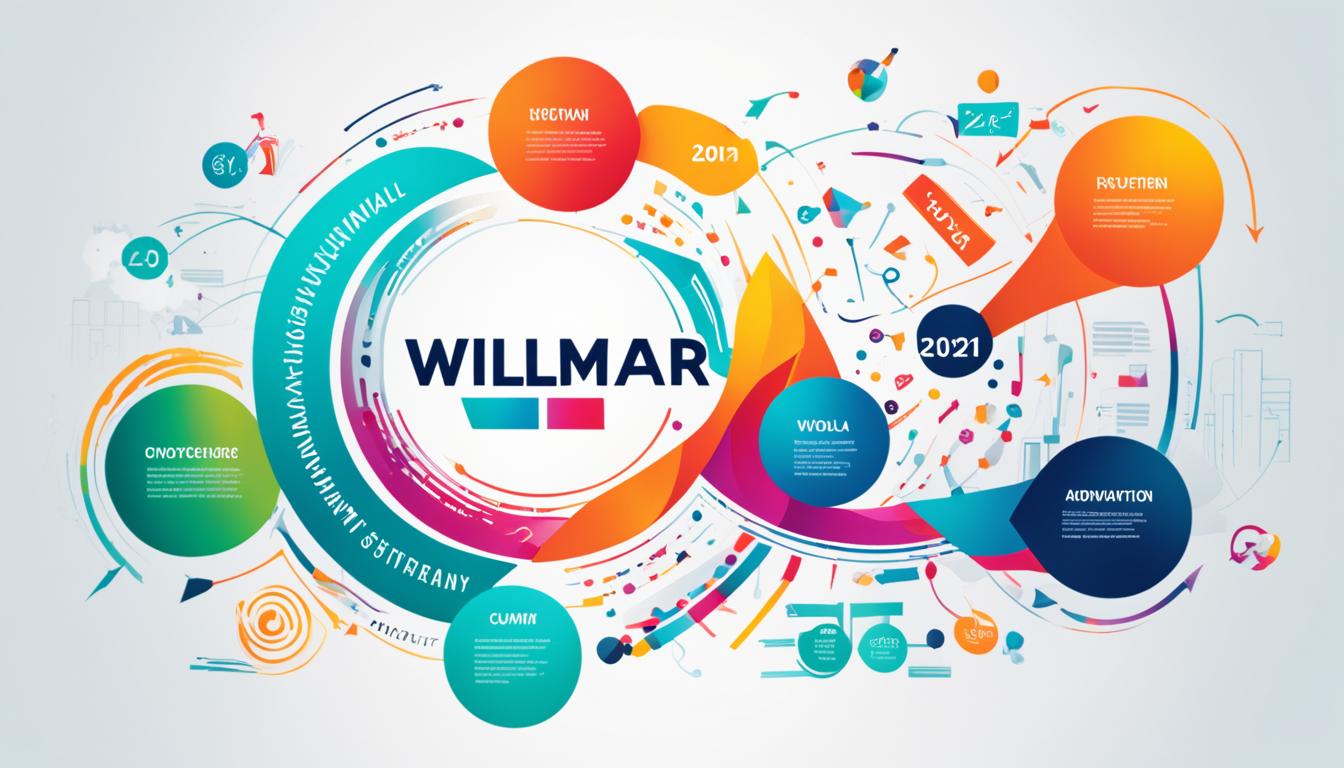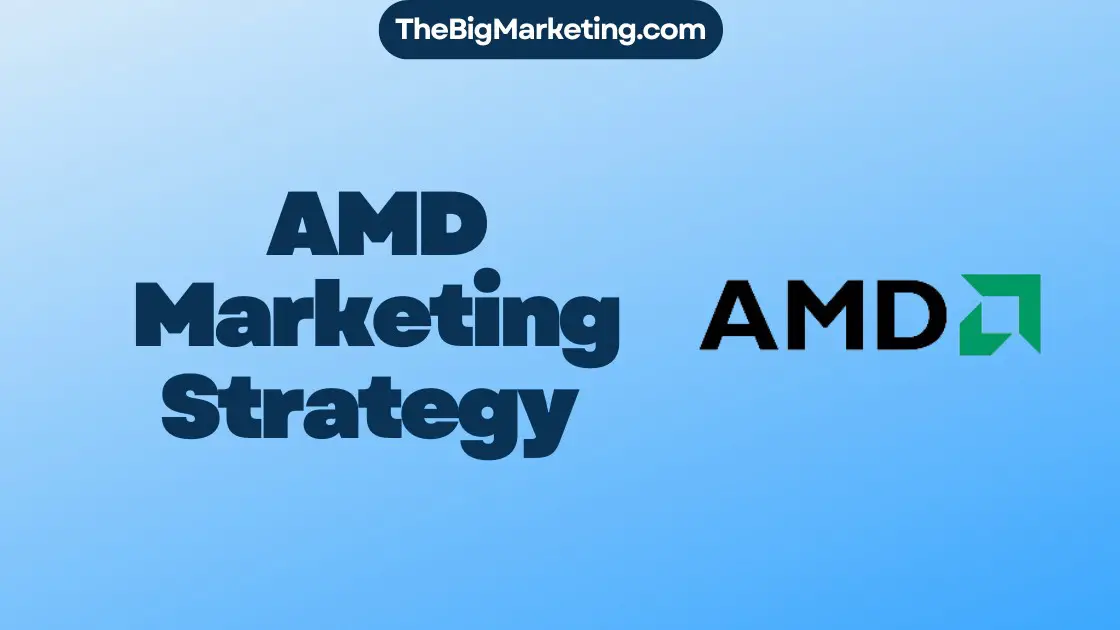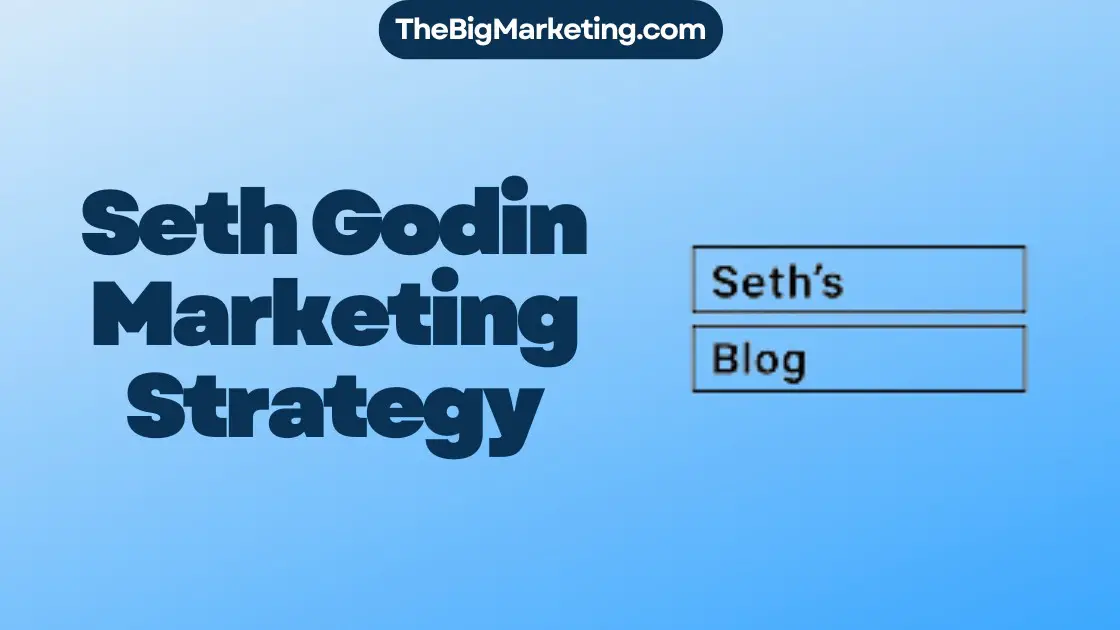An integrated marketing campaign is a powerful and strategic approach that combines various marketing channels to deliver a cohesive brand experience and maximize reach and impact. It involves seamlessly blending digital marketing and traditional marketing tactics to connect with consumers across multiple platforms.
With the rise of technology and the growing presence of digital platforms, brands need to adapt and embrace a cross-channel marketing strategy to effectively engage with their target audience. An integrated marketing campaign ensures that your brand’s message remains consistent and resonates with consumers, irrespective of the channel they prefer.
Gone are the days when customers relied solely on one channel for information or to make a purchase decision. Today, consumers interact with brands and access information across multiple platforms such as social media, websites, email, print ads, and more. An integrated marketing campaign acknowledges this behavior and tailors campaigns that live on the platforms customers frequent.
By leveraging integrated marketing, brands can orchestrate a harmonious brand experience for their audience. Whether a customer comes across your brand on social media, through a Google search, or on a traditional advertisement, the messaging and visuals remain consistent, championing your brand’s identity.
Key Takeaways:
- An integrated marketing campaign combines various marketing channels to create a cohesive brand experience.
- Digital marketing and traditional marketing tactics are blended to reach consumers on multiple platforms.
- Customers interact with brands on various channels, and integrated campaigns acknowledge this behavior.
- Consistent messaging and visuals across platforms strengthen the brand’s identity.
- Integrated marketing campaigns help brands effectively engage with modern consumers.
What are Integrated Campaigns?
Integrated campaigns are strategic marketing campaigns that align marketing channels to promote products or services in a cohesive and consistent manner. By combining the power of various marketing channels, integrated campaigns aim to reach a wider audience and increase brand visibility and awareness.
Integrated marketing communications play a key role in these campaigns by ensuring that the primary brand message is aligned across all marketing channels and assets. This consistency helps to reinforce the brand’s identity and make a lasting impression on consumers.
One of the main advantages of integrated campaigns is their ability to build trust with consumers. By providing a consistent brand experience across different channels, consumers feel more confident in the brand’s credibility and reliability.
Integrated campaigns can include both digital marketing channels and traditional media channels. While digital channels like social media, email marketing, and content marketing have gained significant prominence in recent years, traditional media channels such as print, radio, and TV ads still play a valuable role in reaching certain target audiences.
Overall, integrated campaigns are effective because they allow brands to maximize their reach, create a cohesive brand experience, and leverage the strengths of various marketing channels. By aligning their strategies and messaging, brands can save money by repurposing assets for different channels and create a unified presence in the marketplace.
Example: An integrated campaign for a new clothing brand could involve a combination of digital marketing tactics such as targeted social media ads, influencer partnerships, and email marketing, along with traditional advertising methods like print ads in fashion magazines and TV commercials during prime time shows.
Why are integrated marketing campaigns effective?
Integrated marketing campaigns are powerful strategies that bring together various marketing channels to create a unified and impactful brand message. By aligning these channels, brands can reach a wider audience and establish a top-of-mind presence among consumers.
One key advantage of integrated marketing campaigns is the ability to utilize multiple marketing channels. By leveraging a combination of digital and traditional channels, brands can expand their reach and connect with audiences on various platforms. This ensures that the brand’s message and promotional content are accessible to a diverse range of consumers.
A cohesive brand message across different channels is vital for building trust and credibility. Integrated campaigns ensure that the brand’s messaging remains consistent, regardless of the marketing channel. When consumers encounter a consistent message throughout their customer journey, it reinforces the brand’s authenticity and fosters trust.
Reaching a Wider Audience
Integrated marketing campaigns extend the brand’s visibility and appeal to a broader audience. By utilizing multiple marketing channels, brands can target different segments of their target demographic. This approach not only increases brand awareness but also allows for a more personalized and tailored experience for each segment.
This wider audience reach is essential for establishing a top-of-mind presence among consumers. When a brand consistently engages with its audience across various channels, it increases the likelihood of being remembered when a need arises. This top-of-mind positioning enhances the brand’s chances of securing leads and conversions.
Building Trust and Utilizing Shareable Assets
Integrated campaigns play a significant role in building trust with consumers. When the brand’s message remains consistent across channels, consumers perceive the brand as reliable and dependable. This consistency creates a sense of authenticity and fosters trust, which is crucial for building long-term relationships with customers.
Another advantage of integrated campaigns is their ability to harness shareable assets. By creating assets that can be repurposed across multiple channels, brands can maximize their marketing efforts while minimizing costs. Shareable assets are not only cost-effective but also encourage consumers to share the brand’s content within their own networks, further amplifying brand visibility and reach.
Overall, integrated marketing campaigns offer numerous benefits, including wider audience reach, trust-building, and cost-effective utilization of assets. By aligning marketing channels and delivering a consistent brand message, brands can create a more impactful and memorable marketing campaign.
How to Build an Integrated Marketing Campaign
Building an integrated marketing campaign involves several steps. The first step is to establish the overarching campaign goal. This goal should be specific, measurable, achievable, relevant, and time-bound (SMART). It provides a clear direction for the campaign and aligns the marketing efforts with the overall business objectives.
Next, brands need to choose the most relevant marketing channels based on their campaign goal. The selection of marketing channels should be based on factors such as the target audience, reach, and effectiveness of each channel in achieving the campaign goal. It’s important to consider both digital and traditional marketing channels to create a comprehensive strategy.
In addition to selecting the marketing channels, brands also need to set specific goals for each channel. These goals should be aligned with the overarching campaign goal and tailored to the capabilities and strengths of each channel. Setting goals for each channel helps to ensure that the efforts and resources are focused on achieving the desired outcomes.
Defining buyer personas by channel is crucial in building an integrated marketing campaign. By understanding the characteristics, preferences, and behaviors of the target audience for each channel, brands can create tailored content and messaging that resonate with their audience. This ensures that the campaign messages are personalized and relevant to each channel, maximizing the campaign’s impact.
Identifying channel managers is another important step in building an integrated marketing campaign. Channel managers are responsible for overseeing and managing the specific marketing channels. They ensure that the content and messaging are consistent and aligned with the campaign’s objectives. Having dedicated channel managers helps to maintain the integrity and effectiveness of the campaign across different channels.
To maintain consistency across different channels, brands need to create adaptable marketing assets and messaging. Adaptable assets can be easily modified and customized to suit the specific requirements of each channel without compromising the brand’s identity. This ensures that the campaign’s messaging remains consistent and coherent across different platforms.
Lastly, brands need to establish a plan for lead collection to ensure a seamless conversion process for potential customers. Having a well-defined lead collection plan enables brands to capture and nurture leads generated from the integrated marketing campaign. This ensures that the campaign’s efforts translate into tangible results and contribute to the overall business growth.
Steps to Build an Integrated Marketing Campaign
| Steps | Description |
|---|---|
| 1. Establish Campaign Goal | Set a specific, measurable, achievable, relevant, and time-bound (SMART) goal for the campaign. |
| 2. Choose Relevant Marketing Channels | Select the most appropriate marketing channels based on the target audience and campaign goal. |
| 3. Set Goals for Each Channel | Define specific goals for each channel that align with the overarching campaign goal. |
| 4. Define Buyer Personas by Channel | Create detailed buyer personas for each channel to tailor the campaign content and messaging. |
| 5. Identify Channel Managers | Assign dedicated channel managers to ensure consistency and alignment across different channels. |
| 6. Create Adaptable Assets | Develop marketing assets and messaging that can be easily customized for each channel. |
| 7. Establish Lead Collection Plan | Design a plan to capture and nurture leads generated from the integrated marketing campaign. |
Establish your overarching campaign goal
The success of an integrated marketing campaign begins with the establishment of a clear and concise overarching campaign goal. This goal serves as the guiding force behind the entire campaign, driving the marketing strategy and determining the desired outcomes. The overarching campaign goal should be specific, measurable, achievable, relevant, and time-bound (SMART) to provide a structured framework for the campaign’s execution.
When setting the overarching campaign goal, it is important to align it with the overall marketing strategy to ensure consistency and cohesiveness. This ensures that the integrated marketing campaign is integrated seamlessly into the broader marketing efforts of the organization, reinforcing key messages and delivering a unified brand experience across all marketing channels.
To effectively establish the overarching campaign goal, consider the following:
- Marketing Channels: Identify the marketing channels that will be utilized in the campaign. These channels can include digital platforms such as social media, email marketing, content marketing, search engine optimization (SEO), as well as traditional channels like print, radio, and TV advertising.
- KPIs and Metrics: Define the key performance indicators (KPIs) and metrics that will be used to measure the success of the campaign. These can include metrics such as website traffic, reach, engagement, impact, sentiment, lead generation, and ultimately, sales. By setting specific metrics, you can track the progress of the campaign and make data-driven decisions to optimize performance.
- Impact on Sales Opportunities and Business Revenue: Consider how the integrated marketing campaign will impact sales opportunities and contribute to overall business revenue. This involves analyzing the campaign’s potential to generate leads, nurture prospects, and ultimately convert them into customers. By aligning the campaign goal with sales objectives, you can maximize the impact on revenue generation.
By establishing a well-defined overarching campaign goal, brands can lay the foundation for a successful integrated marketing campaign. This goal sets the direction for the campaign, aligns marketing efforts, and drives measurable results that impact sales opportunities and business revenue.
| Benefits of Establishing an Overarching Campaign Goal | Examples |
|---|---|
| 1. Alignment: Ensures that the campaign aligns with the overall marketing strategy and delivers a consistent brand message across all channels. | For example, a clothing brand’s overarching campaign goal could be to increase brand awareness and drive online sales by 20% within three months. |
| 2. Measurability: Provides a clear framework for measuring the success of the campaign through defined KPIs and metrics. | For example, a software company’s overarching campaign goal could be to increase website traffic by 50% and generate 100 qualified leads per month. |
| 3. Revenue Impact: Considers how the campaign will contribute to sales opportunities and overall business revenue. | For example, a B2B service provider’s overarching campaign goal could be to generate $1 million in new business revenue within six months through lead nurturing and conversion. |
Setting a strong overarching campaign goal is the first step towards building a successful integrated marketing campaign. It provides a clear direction, aligns marketing efforts, and enables businesses to achieve their desired outcomes and impact sales opportunities and business revenue.
Choose your marketing channels and set goals for each one
Once you have established the overarching goal of your integrated marketing campaign, it is essential to select the appropriate marketing channels to reach your campaign’s objectives. The selection of marketing channels should be based on your target audience and the specific goals you aim to achieve.
There are 10 major marketing channels that can be effectively utilized to distribute your campaign content and engage with your target audience:
- Social media
- Email marketing
- Content marketing
- Search engine optimization (SEO)
- Pay-per-click advertising (PPC)
- Influencer marketing
- Public relations
- Events and sponsorship
- Traditional advertising
- Direct marketing
Each marketing channel has its own unique strengths and advantages that can contribute to the success of your integrated marketing campaign. It is important to align each channel with their respective goals, ensuring that they work harmoniously to reach the overall campaign goal.
For example, social media channels can be leveraged to generate brand awareness and engage with your target audience on a more personal level. Email marketing is effective for nurturing leads and driving conversions. Content marketing can establish your brand as a thought leader and provide valuable information to your target audience. SEO helps improve your website’s visibility on search engines, increasing organic traffic. PPC advertising allows for targeted advertising and immediate results. Influencer marketing can help amplify your brand message and reach new audiences through trusted influencers.
By setting specific goals for each marketing channel and aligning them with your overarching campaign goal, you can maximize the effectiveness of your integrated marketing campaign and ensure that your message reaches the right audience through the most suitable channels.
Define your buyer personas by channel
When building an integrated marketing campaign, it is important to understand that each marketing channel targets a specific audience. Instead of creating a broad persona for the entire campaign, it is more effective to define buyer personas for each individual channel. By doing so, you can tailor your campaign assets to resonate with the target audience of each channel, resulting in a more successful outcome.
While there may be some overlap between the personas, taking the time to understand the specific audience for each channel will allow you to create tailored assets that truly speak to their needs and preferences. This level of personalization enhances the effectiveness of your integrated marketing campaign and ensures that your message is well-received by your target audience on each platform.
For example, if you are running a campaign on social media, your buyer persona for that channel may be younger and more socially active individuals. On the other hand, if you are running a campaign through email marketing, your buyer persona may be professionals who prefer a more direct and personalized communication method.
By defining your buyer personas by channel, you can create assets that are specifically tailored to engage and resonate with the unique characteristics of each audience. This approach increases the likelihood of success for your integrated marketing campaign and helps you maximize the impact of your efforts.
By considering the unique preferences and characteristics of your target audience on each marketing channel, you can ensure that your integrated marketing campaign effectively reaches and engages the right people with content specifically tailored to their needs. This level of personalization and relevance is key to achieving success in your integrated marketing campaign.
Identify your channel managers
Depending on the size of the marketing team, there may be different individuals or groups responsible for managing each marketing channel. In an integrated marketing campaign, it is important to identify channel managers who will ensure the alignment of their respective channels with the campaign. This ensures that the content created for each channel is optimized for the specific audience and maximizes the impact of the campaign. It is beneficial to share channel management responsibilities across multiple team members to avoid overwhelming one person and to ensure the content and campaign are well-executed across all channels.
Channel managers play a crucial role in the success of an integrated marketing campaign. They are responsible for overseeing the marketing channels and ensuring that the content created for each channel aligns with the campaign goals and objectives. By having dedicated channel managers, brands can ensure that their marketing efforts are cohesive and consistent across all channels.
Channel managers have the responsibility of not only creating content but also optimizing it for their respective channels. They should have a deep understanding of the target audience for their channel and tailor the content to meet their needs and preferences. By doing so, they can maximize the impact of the campaign and effectively engage with the target audience.
Collaboration and alignment among channel managers are essential. They should work together to ensure that the messaging and branding are consistent across all channels. This helps to create a unified brand experience for the audience and reinforces brand recognition. By sharing responsibilities and collaborating effectively, channel managers can optimize the content creation process and streamline the delivery of the campaign.
Overall, identifying channel managers is a crucial step in building an integrated marketing campaign. They play a vital role in content creation, optimization, and ensuring that all channels are aligned with the campaign goals and objectives. With their expertise and coordination, channel managers contribute to the success of the campaign by delivering a cohesive and impactful marketing strategy.
Conclusion
Integrated marketing campaigns are essential in today’s digital age. By leveraging multiple marketing channels and maintaining consistent messaging, brands can create a cohesive brand experience for their targeted audience. This approach helps establish brand recognition and strengthens the relationship between the brand and its consumers.
By adopting an integrated approach, brands can effectively engage with their audience and build long-lasting relationships. Through cross-channel marketing, brands can reach consumers on various platforms and create a unified brand experience. This not only ensures consistent messaging but also increases brand visibility and awareness.
With consumers interacting with brands through multiple channels, it is crucial for brands to implement integrated marketing campaigns. By providing a seamless and cohesive experience, brands can better connect with their target audience and establish themselves as a trusted and reliable choice. Integrated marketing campaigns are the key to reaching and engaging today’s consumers in a dynamic and competitive marketplace.





